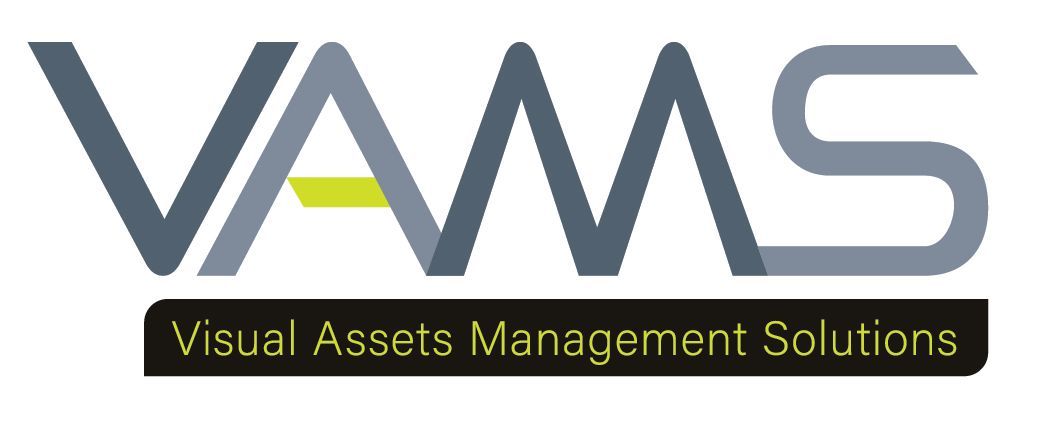Visual Asset Management for Multi-Location Brands
Visual Asset Management for Multi-Location Brands

Visual Asset Management for Multi-Location Brands
Efficient management of visual assets is a critical component for multi-location brands
aiming to uphold consistency and quality across different markets. Visual asset
management (VAM) systems serve as transformative tools that facilitate the organization,
storage, and access of digital content, ensuring uniformity in how each location portrays
the brand's identity.
Challenges of Managing Visual Assets for Multi-Location Brands
Managing visual assets across multiple locations presents a unique set of challenges that
can hinder a brand's ability to project a cohesive identity. First, ensuring brand consistency
becomes a Herculean task as each location may have its interpretations of marketing
materials, leading to a diluted brand message.
Moreover, the sheer volume of assets generated can become overwhelming, making
efficient organization and retrieval a logistical nightmare. Security and scalability also pose
significant concerns, as brands must protect their assets from unauthorized access while
ensuring the system can grow with their expanding needs.
In addition to these concerns, the varying digital asset standards and practices across
different regions can complicate management. For instance, legal regulations regarding
digital content can vary markedly between countries, requiring brands to adapt their asset
management strategies accordingly.
Furthermore, the diverse technological infrastructure across locations can affect how
assets are uploaded, stored, and accessed, potentially leading to inefficiencies and
inconsistencies in asset handling. Addressing these challenges is essential for brands
looking to leverage their visual content effectively and maintain a strong market presence.
Key Components of an Effective Visual Asset Management System
A robust visual asset management system incorporates several key components that
streamline the process of managing digital assets across various locations. Centralized
storage is the cornerstone of an effective system, allowing for secure and scalable
solutions that cater to the needs of expansive brands. Efficient tagging and metadata
capabilities ensure that assets are easily searchable and retrievable, saving valuable time
and reducing frustration among team members.
Additionally, clearly defined user permissions and access controls are crucial for
maintaining the integrity of the assets, allowing only authorized personnel to alter or
distribute sensitive content. Furthermore, advanced analytics and reporting features are
essential components that enhance a visual asset management system.
These tools provide insights into asset usage, performance, and user engagement,
enabling brands to make data-driven decisions about their visual content strategies.
Integration capabilities are also critical, as they allow the VAM system to seamlessly
connect with other software used by the brand, such as content management systems
(CMS) and customer relationship management (CRM) tools, creating a cohesive workflow
environment.
These features collectively ensure that the visual asset management system is not only
robust but also adaptable to the dynamic needs of a multi-location brand.
Benefits of Implementing a Robust Visual Asset Management System
Adopting a comprehensive visual asset management system offers numerous benefits that
can significantly impact a brand’s operations and market presence. One of the primary
advantages is enhanced brand consistency. With a centralized system, all locations access
the same high-quality assets, which helps in maintaining a unified brand image.
Improved collaboration and efficiency are also notable benefits; teams can work together
seamlessly, regardless of geographical barriers, thanks to streamlined access to shared
assets. Furthermore, a well-implemented system can lead to substantial cost savings by
reducing redundancies and accelerating the time-to-market for marketing campaigns,
ultimately enhancing the brand’s competitive edge.
Disaster Recovery and Data Protection: A robust VAM system not only organizes and
streamlines access to visual assets but also plays a crucial role in disaster recovery. By
having all assets stored securely in cloud-based systems, brands ensure that their valuable
data is backed up and can be restored quickly in the event of data loss due to hardware
failures, natural disasters, or cyber-attacks. This resilience is essential for maintaining
business continuity and protecting the brand’s assets from various unforeseen
circumstances.
Enhanced Analytical Capabilities: Implementing a sophisticated VAM system allows
brands to utilize built-in analytics to track asset usage and performance across different
markets. This data can be invaluable for marketing teams to understand which assets are
most effective, helping to refine marketing strategies and improve engagement rates.
Additionally, these insights can help identify underperforming assets that might need
updating or replacement, ensuring that the visual content remains fresh and relevant.
Choosing the Right Visual Asset Management Solution
Selecting the ideal visual asset management system for a multi-location brand involves
considering several key factors to ensure the solution aligns with the organization's specific
needs. Customizability is crucial as it allows the system to adapt to the unique workflows
and processes of the brand.
Scalability is another important consideration, ensuring that the system can handle
increasing amounts of assets as the brand grows. Additionally, user-friendliness should not
be overlooked; a system that is easy to navigate and use is essential for facilitating quick
adoption and minimizing training requirements.
Brands should also review and compare several popular visual asset management tools,
taking into account features such as integration capabilities, support services, and overall
cost-effectiveness to make an informed decision.
Security Features: Security is paramount when choosing a visual asset management
solution, especially for brands that handle sensitive or proprietary content. Look for
systems that o8er robust encryption, secure file transfer protocols, and regular security
audits to safeguard data from unauthorized access and breaches. Additionally, the ability
to control and monitor user access at granular levels adds an extra layer of security by
ensuring that only authorized personnel have access to specific assets based on their role
or requirements.
Integration Capabilities: A key factor in selecting the right VAM system is its ability to
integrate seamlessly with other tools and platforms currently used by the brand. This
includes compatibility with content management systems, marketing automation tools,
and customer relationship management platforms. Seamless integration enhances
workflow efficiency and reduces the risk of errors associated with manual data entry or
asset transfer, which can be critical for maintaining brand consistency across multiple
locations.
Best Practices for Visual Asset Management
Implementing best practices in visual asset management is essential for maximizing the
system's effectiveness and ensuring smooth operations across multiple locations.
Organizing assets with logical and consistent tagging helps in quick retrieval and reduces
the time spent searching for specific files. Using a hierarchical structure that mimics the
organization’s departments and functions can further streamline this process.
It is also crucial to employ a version control system that keeps track of different versions of
the same asset to prevent duplication and confusion. Regular audits of the asset library to
remove outdated or unused files can maintain system efficiency and reduce clutter.
Moreover, it is advisable to establish clear guidelines for naming conventions and file
formats, which can drastically improve the manageability of digital assets.
Training and onboarding are vital; all team members should understand how to use the
system effectively, ensuring that they can access and utilize assets as needed without
constant supervision or assistance. Continuous training sessions and updated guidelines
can help in keeping the team abreast of new features and best practices.
Future Trends in Visual Asset Management
The future of visual asset management looks promising with the integration of advanced
technologies such as artificial intelligence (AI) and machine learning (ML). These
technologies are set to revolutionize how brands manage and utilize their visual assets. AI
can automate many aspects of asset management, including tagging and categorizing,
making the systems even more efficient.
For instance, AI-powered image recognition can automatically tag images based on their
content, significantly reducing manual labor and improving accuracy. Machine learning
algorithms can analyze usage patterns to suggest better file organization or highlight
frequently used assets for easier access.
Additionally, predictive analytics could play a role in determining which assets are likely to
perform best in certain markets, aiding in decision-making processes. This can help
marketers focus their efforts and resources on high-impact visuals, enhancing overall
marketing effectiveness.
The implementation of blockchain technology could also enhance security and copyright
management, making it easier to track and manage licensing and usage rights across
different regions. As these technologies continue to evolve, they will significantly enhance
the capability of visual asset management systems to support dynamic and successful
multi-location branding strategies.
Harnessing the Power of Visual Asset Management
In conclusion, effective visual asset management is indispensable for multi-location
brands aiming to maintain consistency and operational efficiency. By adopting a robust
system, brands can ensure uniformity across all regions, enhance collaboration, and
achieve significant cost reductions. Embracing future technologies will further optimize
these efforts, positioning brands for continued success in a competitive marketplace.

